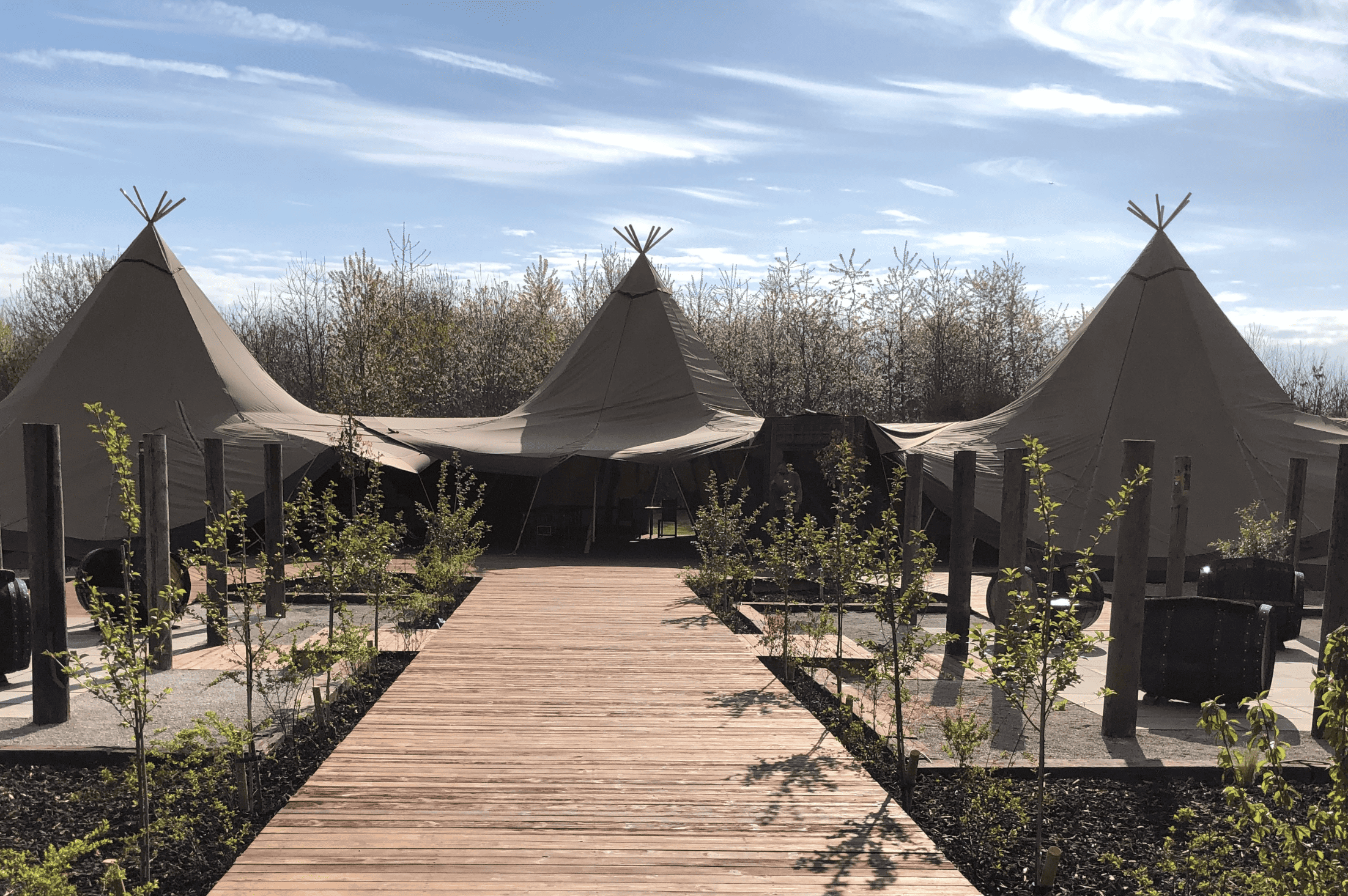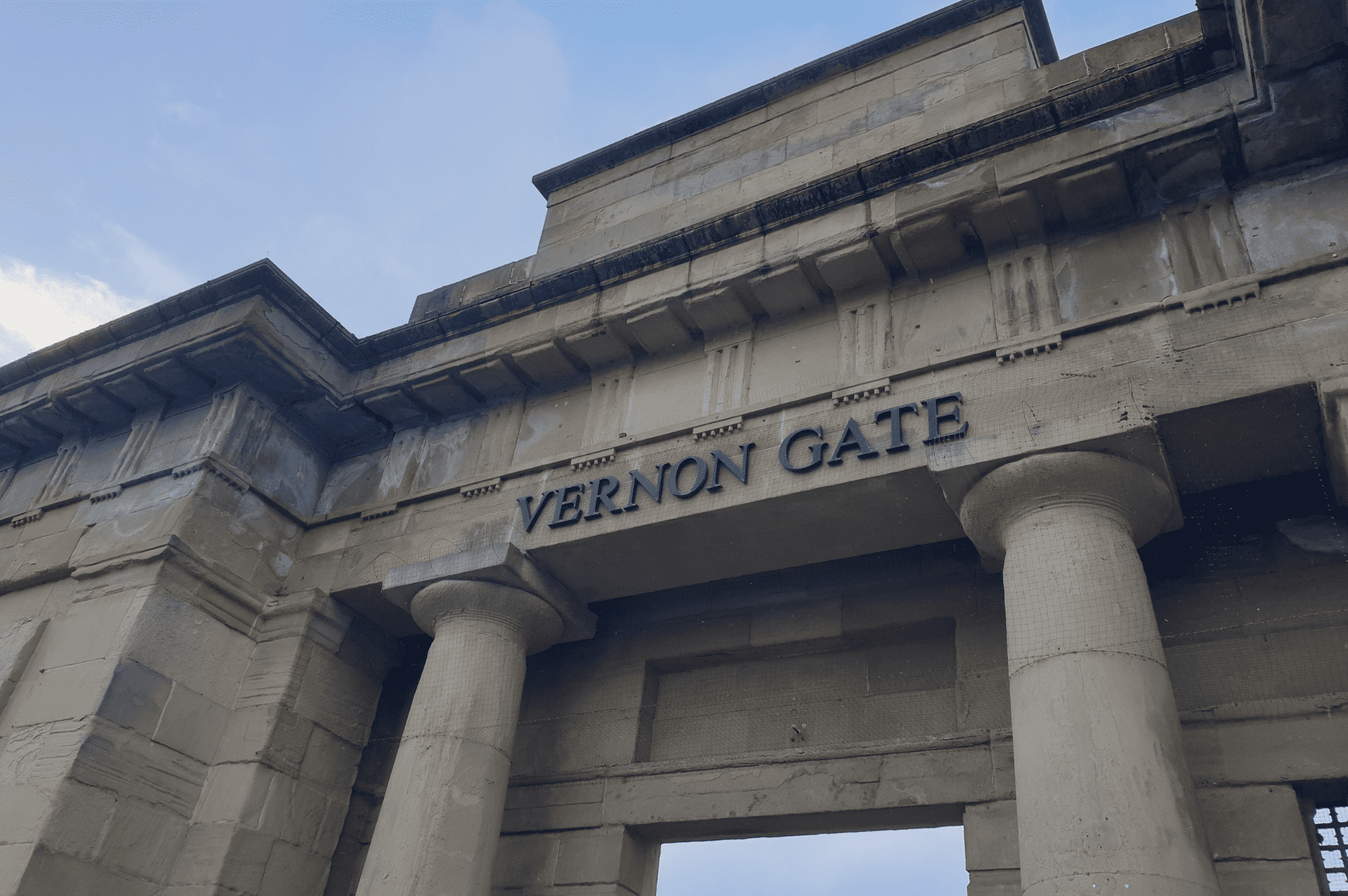Our Consultant Jonathan Jenkin, details how Planning & Design Practice received planning permission in August for a new wedding venue in South Derbyshire, following a lengthy process complicated by the Covid pandemic, and soaring demand.
The site is about two miles south of Burton on Trent in the open countryside. The venue was chosen within a recently completed area of woodland within the National Forest. The forest setting provided the theme for the wedding venue and the client proposed tipis and a series of hard and soft landscape features. The client had trialled the idea in 2019 with the erection of tents and temporary buildings and the trial proved to be very successful. The site chosen was a long way from other property that was not within the applicants control and the wooded nature of the venue protected the site in landscape terms.
At the outset it was agreed that the venue would be seasonal. The client’s ideas evolved over time from when we first submitted the application to the eventual approval and were amended towards the end of the process. This was to take account of the requirements of the planners and statutory consultees particularly the Council’s Environmental Health officer and his concerns over noise.
When Covid struck in 2020, the application sat in the council’s offices gathering dust. It was submitted in the summer of 2020 but was not validated for over 6 months. By 2021 the council had a recruitment crisis and with re -occurring lock downs, the normal planning process was almost impossible. During the lock down period, the applicant revised his proposals (there was plenty of time to think about it) and this led to further changes. Eventually a planning officer was recruited and by late April 2022 matters were finally moving forward with a decent planner who took a pragmatic view and was willing to collaborate with the client and our team to deliver a planning approval.
The demand for wedding venues soared as delayed events were re-scheduled. By early 2022 the demand was astronomic but at that time we still did not have a planning approval. By April 2022 we had our first site meeting with the planning team. The meeting was a success but by that time much of the infrastructure including large areas of hardstanding, a car park, an extended Tipi Tent, a ceremony structure and landscaped gardens and seating areas had been built, none had planning and the deadline for the first booked weddings was fast approaching.
It is at these times when you find yourself as a consultant out on a limb. The applicant has spent a lot of money, key moments in people’s lives are scheduled and still no planning consent. Without a planning consent, no licensing, and no Registrar. This is not a comfortable place to be.
At this point we had to negotiate hard, try to get flexibility from both the client and the council. We succeeded because the applicant was on side and he worked hard, while the planner and the Environmental Health Officer did their best. We were lucky, no objections from neighbours and no planning committee.
Covid made the process far worse coupled with 12 years of austerity, with an underfunded planning service, and an underfunded Environmental Health service and this goes for conservation, flooding and much else. The councils’ do not have the staff to do the job, and this makes the planning process difficult and extremely frustrating.
To grow the economy, you need a robust planning system and this needs to be paid for. We are nowhere near where we need to be with no prospect of an improvement under the current government.
Jonathan Jenkin, Consultant, Planning & Design Practice Ltd
Planning & Design have a wealth of experience in designing and securing planning permission for commercial projects.
We have the required skills to design both small and large scale schemes in-house and tailor the design to the client’s unique specifications.
If you are unsure of your site’s potential, we are also able to provide our professional opinion on the planning potential of your property at the outset. For a no obligation consultation to discuss your project or property, please get in touch on 01332 347371 pr email enquiries@planningdesign.co.uk




